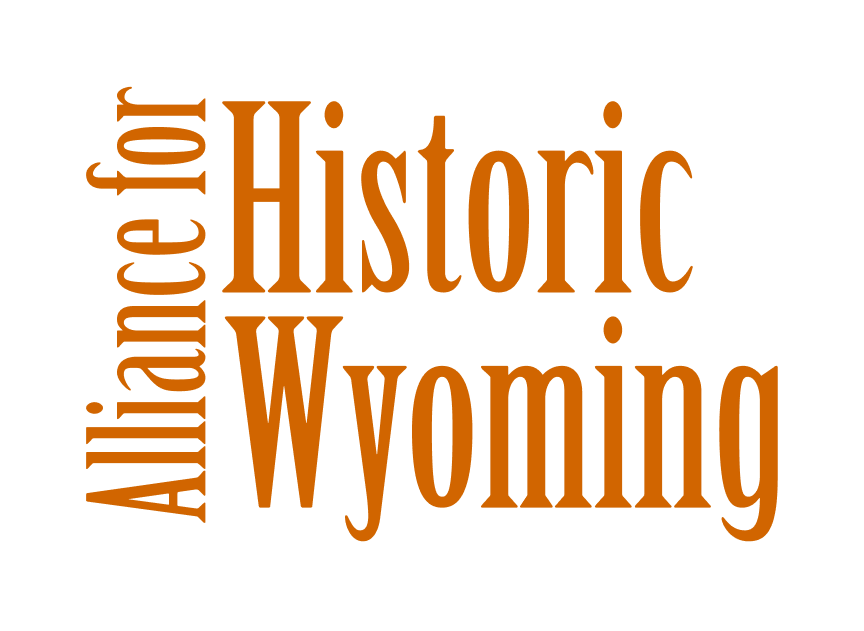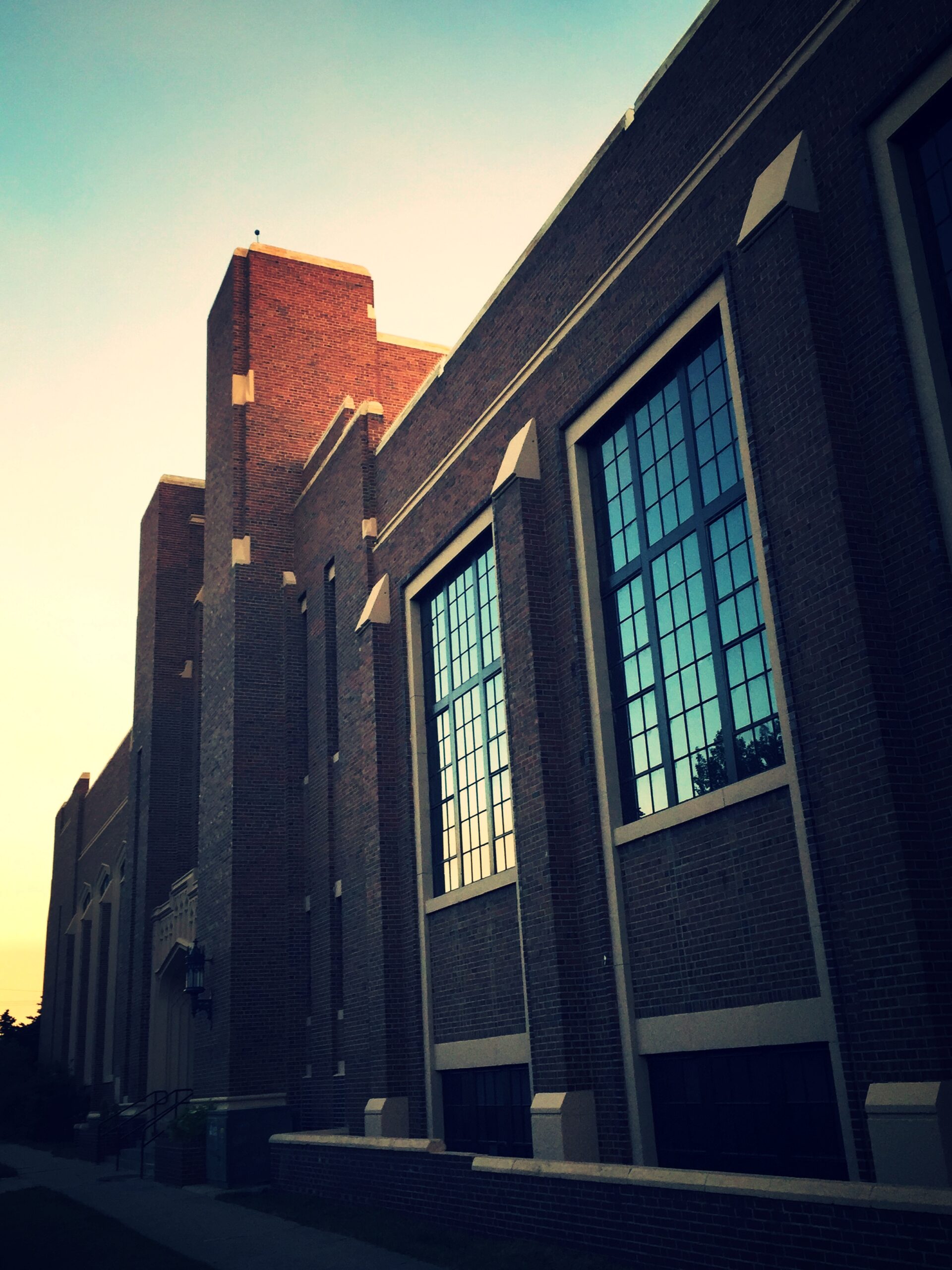By Luke Anderson
March 8, 2017
The Laramie Plains Civic Center is massive – it takes up an entire city block between 7th and 8th Streets and Garfield and Custer Streets. Despite the characteristic Art Deco exterior facade from the 1939 addition, the school (at least portions of it) actually predates the state of Wyoming. The original part of the school was built in 1878 as the East Side School and is the oldest public school building in Wyoming. The school predates the University of Wyoming by eight years.




 View of the north facade looking southwest. The Gryphon Theatre can be seen on the left side of the main entrance. The gold tiles in the tall windows indicate where the balcony of the theatre intersects with the outer wall.
View of the north facade looking southwest. The Gryphon Theatre can be seen on the left side of the main entrance. The gold tiles in the tall windows indicate where the balcony of the theatre intersects with the outer wall.

